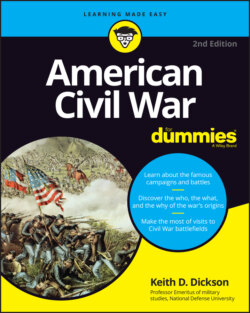Читать книгу American Civil War For Dummies - Keith D. Dickson - Страница 135
The Western Theater
ОглавлениеThe Western Theater was a vast area that stretched from the Appalachian Mountains in the north, south to the Gulf coast, and west to the Mississippi River. The Mississippi was a significant east-west barrier to movement but an excellent north-south corridor for invasion. The Confederacy had to keep the river under its control to avoid being split in two, which was part of the Union’s strategy; for the Union, control of the river was a key to success. To control the river, you had to control both New Orleans and Vicksburg, the two main cities on the river. Other important rivers, such as the Tennessee and the Cumberland, served as invasion routes deep into the interior of the South that also had to be defended against invaders. The ability to build a strong naval presence on these critical rivers would support land forces. Keeping river access open to friendly forces while denying the same access to enemy forces was a critical factor to achieving victory.
The Western Theater also had most of the South’s agricultural land and its east-west railroad lines. The railroads were vital to the Confederacy’s survival. There were a number of these lifelines: One was the Corinth–Chattanooga–Knoxville–Richmond line; another was Vicksburg–Montgomery–Atlanta–Charleston line; a third was the Columbia–Wilmington–Raleigh–Petersburg–Richmond line. Each of these moved supplies and troops between theaters. Thus, if Union forces could cut off these lines, the Confederacy would be unable to defend or sustain itself for very long. Protecting these lines and the cities that had major rail junctions became a centerpiece of Confederate strategy.
The coastline of the Confederacy offered invaders opportunities to strike from the sea inland at harbors, ports, inlets, sounds, and rivers. The Confederacy’s major port cities of Galveston, New Orleans, Mobile, Savannah, Port Royal, Charleston, Wilmington, and Norfolk had to remain open. Both sides knew that the Confederacy’s survival depended on international commerce for critical supplies and funding. Union strategy would focus on maintaining a tight, effective blockade to shut down the ports; the Confederate strategy would focus on breaking the blockade or minimizing its effect to allow the ports to operate freely.
